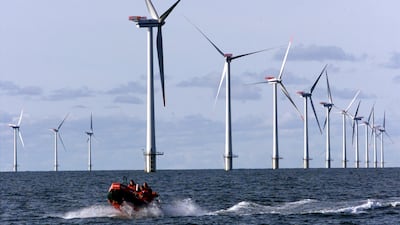More than a year since the start of the war in Ukraine, the repercussions have had a seismic impact on the energy transition.
The vulnerability of a world reliant on a single source of energy has been painfully underscored, further reinforcing the urgent need to diversify the global energy mix. Long-standing energy ties and supply lines have shifted to new paradigms, perhaps irreversibly, as new partnerships have emerged. In short, we have witnessed a major reshuffling of the global energy system.
As the dialogues held at the Munich Security Conference last month showed, this altered energy landscape doesn’t end with the supply of hydrocarbons. It will extend to green energy solutions in the future.
This climate of geopolitical volatility has laid bare the importance of driving an inclusive energy transition. But this very energy transition now hangs in the balance.
Increased prices for minerals and metals necessary for the development of renewable and clean energy technologies mean that countries pursuing net-zero targets now have to contend with so-called ‘greenwalls’ to push through their plans.

Access to energy in the developing world has also been greatly impacted. Rising energy prices, and the consequent rising cost of electricity generation have meant that the 70 million people who gained access to electricity prior to the conflict can no longer afford it. As a knock-on-effect, this also means access to clean cooking fuels is once again restricted, forcing people in climate-vulnerable communities to resort to high-emitting fuels, putting their health at further risk.
While this new landscape is still evolving, one thing is certain: we will not return to the way things were.
While there is certainly no silver bullet to this complex, unfolding situation, it underlines the already-compelling point that we must accelerate the shift towards more sustainable energy solutions, as we define the contours of tomorrow’s energy system.
Countries across the world have recognised this and acted, putting a robust and diverse energy mix at the heart of energy security policies implemented in the wake of the conflict. From the EU to the US and Canada, and from Australia to India, a raft of policies have been designed to increase the share of renewables in national energy mixes, decarbonise industrial processes and raise emissions reduction ambitions.
It follows, then, that global investments in energy transition technologies in 2022 – including energy efficiency – set a new record high, to reach $1.3 trillion. That’s an increase of 19 per cent from 2021 investment levels, and a 50 per cent spike from before the pandemic in 2019, according to a new report from the International Renewable Energy Agency (Irena) and the Climate Policy Initiative (CPI).
These figures clearly demonstrate that in response to geopolitical uncertainty and disruptions to traditional energy sources, many countries are accelerating their transition plans, recognising the benefits of a more diverse and sustainable energy mix.
However, the joint report by Irena and the CPI — launched on the side-lines of the Spanish International Renewable Energy Conference (SPIREC) in Madrid this week — also finds that, although global investment in renewable energy reached a record high, this still represents less than 40 per cent of the average investment needed each year between 2021 and 2030, according to Irena’s 1.5°C Scenario.
With renewable energy expected to account for 95 per cent of the net increase in global power capacity from all sources combined over the next two years, the international community must build on this momentum to secure an inclusive energy transition, and overcome the emerging hurdles on the road to net zero economies.
We must ensure that investments are going into the right technologies and the right solutions for a practical energy transition, to diversify the energy mix, support the development of new industries and create new jobs.
As more countries adopt ambitious renewable energy targets and policies, the UAE continues to play a leading role as a reliable energy producer, while driving the development of clean and renewable energy solutions.
Following a landmark agreement signed with Germany in September aimed at accelerating joint efforts to boost energy security, decarbonisation and combat climate change, the UAE delivered its first batch of low-carbon ammonia, in another demonstration of the UAE’s commitment to delivering energy solutions to where they are needed.
Such partnerships with the international community will be crucial to ensuring the energy transition stays on track. Indeed, partnerships will be a key area of focus at Cop28 in the UAE this year, as we leverage our convening power to bring nations together to build consensus on the most efficient way forward for climate action in this evolving geopolitical context.
Because while the Ukraine conflict has exposed the major vulnerabilities in today’s energy system, we’ve seen that renewable solutions can bridge the gap between supply and demand. The key to progress lies in striking the balance between energy security and climate progress – a topic that we cannot afford to lose sight of.


